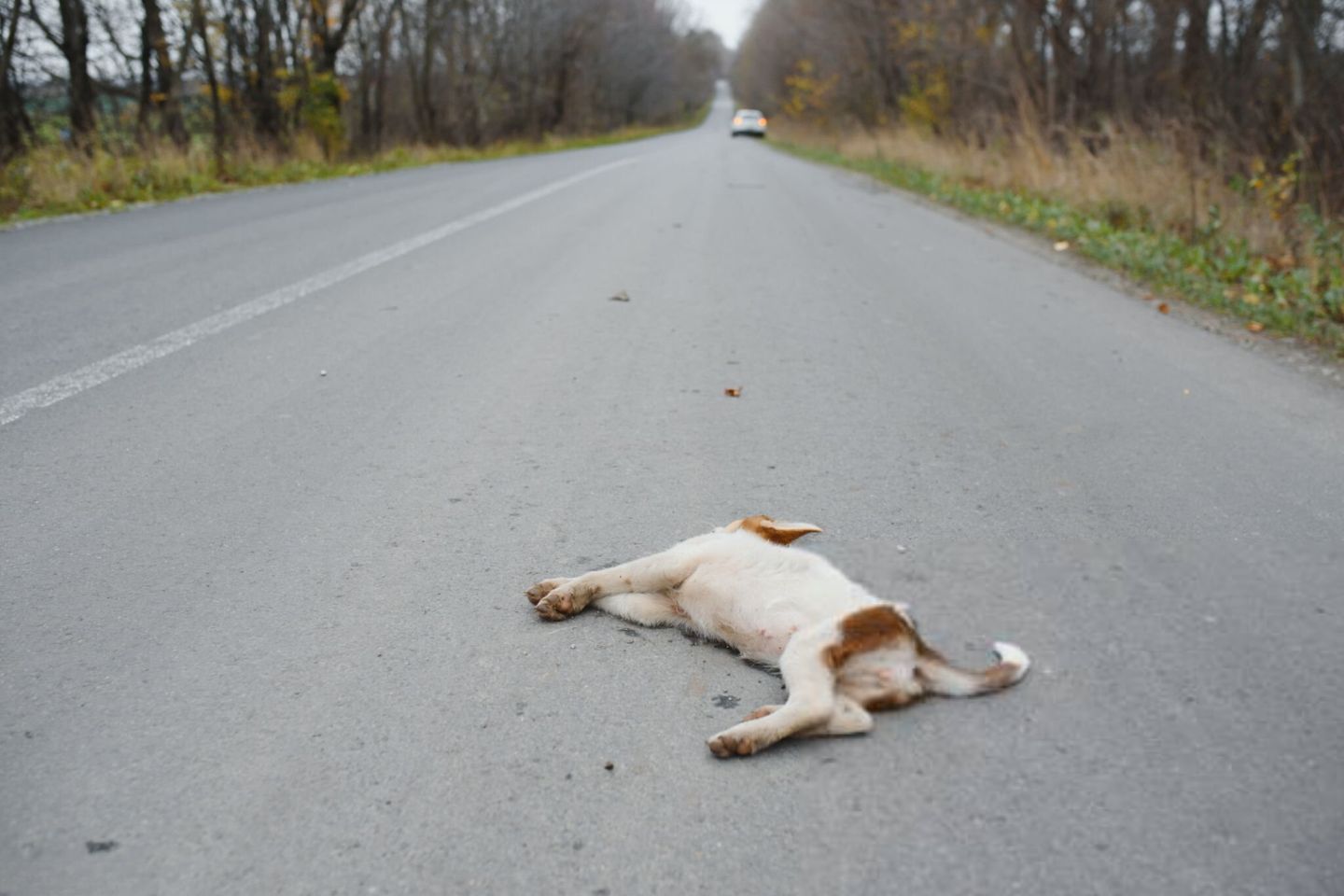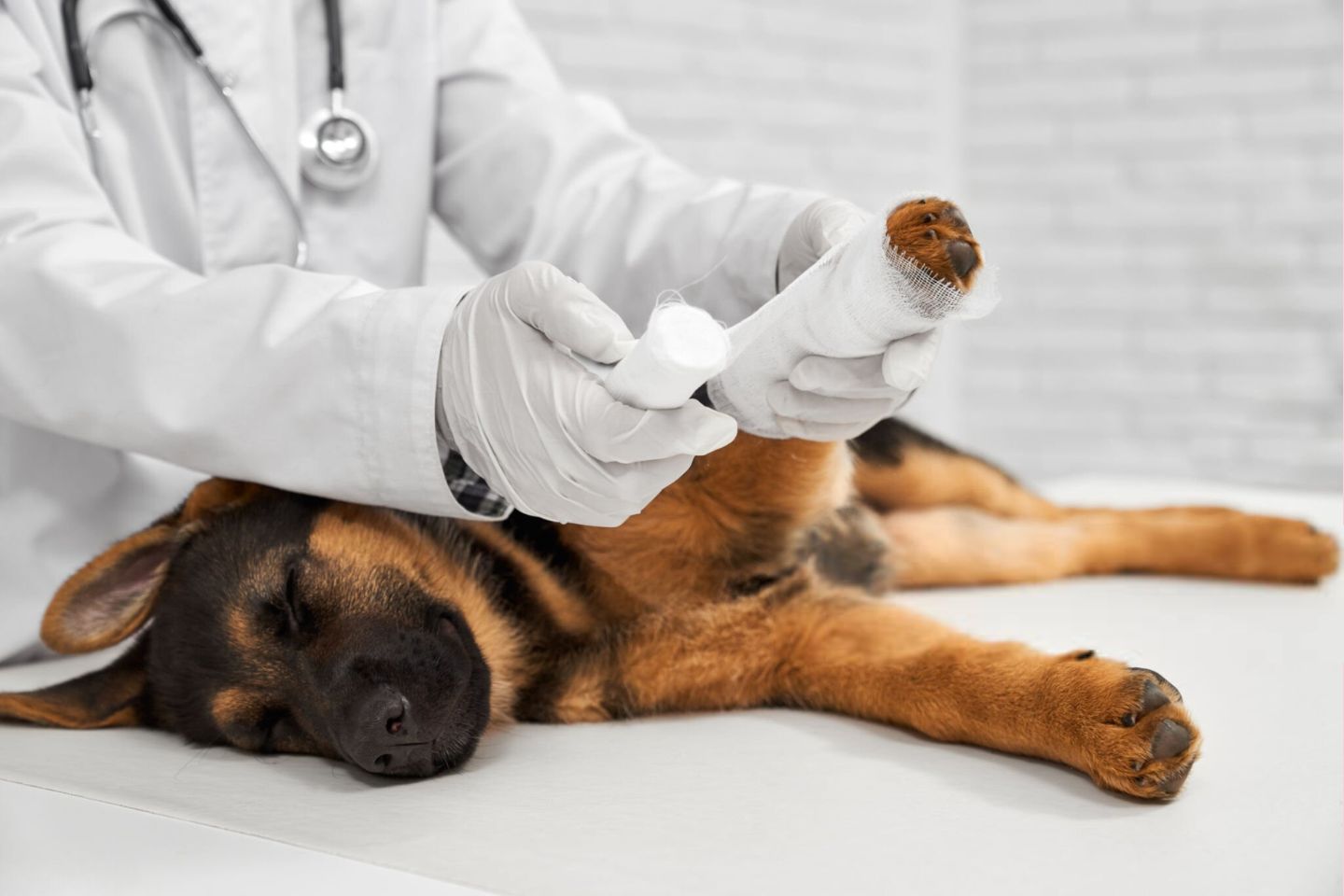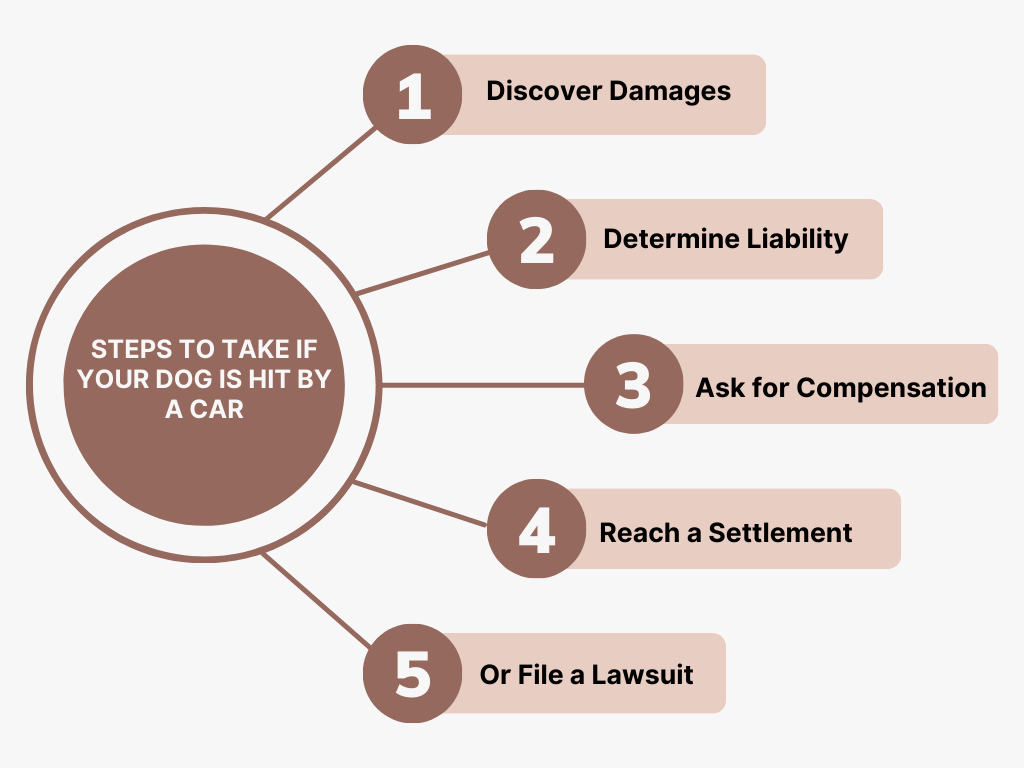Have you lost a beloved pet in a hit-and-run accident in California? This tragedy, like the recent Rohnert Park incident where two dogs and a pedestrian were struck, leaves pet owners heartbroken and searching for answers.
Navigating the aftermath of such incidents requires a clear understanding of hit-and-run dog laws in California. This complex area of legal recourse and responsibilities can seem overwhelming for pet owners seeking justice or wishing to prevent future tragedies.
This article aims to clarify dog laws in California, providing essential guidance for those affected by similar heartbreaking events.
Legal Obligations After a Hit and Run Involving a Dog


When a dog is injured in a traffic accident in California, the moments immediately following the incident are crucial for the well-being of the animal and for fulfilling your legal obligations.
According to California Vehicle Code Section 20002, when a dog, which is considered “personal property” under the law, is hit by a vehicle, the driver involved in the incident has specific duties to uphold.
Immediate Actions
California law emphasizes immediate and careful intervention to ensure the safety and welfare of the injured animal.
Here’s how you can take action responsibly:
- Safety First: The primary concern should be to secure the dog in a safe location away from further danger. Injured animals may act unpredictably due to fear or pain, so proceed with caution. Using a blanket or similar item, gently move the dog off the road to prevent additional injuries.
- Handling the Dog: Should the dog display signs of aggression or fear, utilizing a leash or even a t-shirt as a makeshift muzzle can help ensure safety during transportation. It’s crucial, however, to remove the muzzle as soon as it’s safe to do so to avoid complicating breathing or increasing the risk of choking, especially if the dog attempts to vomit.
- Checking for Signs of Life: Carefully assess the dog for any indications of life or immediate health issues. Keeping your demeanor calm and movements gentle can help minimize the stress experienced by the already traumatized animal.
Seeking Veterinary Care


In line with California’s legal framework, ensuring that an injured dog receives timely veterinary care is not only a moral imperative but also a legal expectation.
Here’s what this step involves:
- Medical Assessment: Upon arrival at a veterinary clinic, the injured dog will be subject to a comprehensive examination. This includes x-rays, blood tests, and other diagnostic procedures to assess the full scope of injuries. For serious internal injuries, immediate surgical intervention may be necessary. Such thorough medical attention is vital for the dog’s recovery and well-being.
- Importance of Identification: In the context of ensuring the safety and quick identification of your pet, California’s Code of Ordinances Section 10.04.140, underlines the importance of having your dog microchipped and registered. A microchip is a direct line to you, ensuring you’re promptly informed and can make critical decisions regarding your pet’s care.
Legal Requirements
Adhering to California’s legal requirements in the wake of a traffic incident involving a dog is critical for ensuring accountability and facilitating the animal’s care.
Here are a few:
- Reporting the Incident: As the driver, you bear the legal duty to make every reasonable effort to locate the dog’s owner or to securely leave your contact details at the scene. Should these efforts not be feasible or successful, you are mandated to report the accident to the police.
- Understanding Your Obligations: This section of the law highlights the importance of taking responsibility not only for the welfare of the injured dog but also for adhering to legal requirements to avoid further legal complications.
If you find yourself in a situation where your pet has been injured in a hit-and-run incident, or if you’re seeking guidance on how to navigate the legal responsibilities thereafter, reaching out to The Personal Injury Center can be beneficial. We provide you with access to legal experts specialized in handling such cases. They can offer the necessary support and guidance to ensure you fulfill your legal obligations.
Consequences of Fleeing the Scene After Hitting a Dog in California
When an individual fails to stop and take appropriate action after hitting a dog with their vehicle, the legal ramifications under California law can be significant. Section 20002 outlines the requirements for drivers involved in accidents that result in property damage, including incidents involving pets.
- Misdemeanor Charges: Drivers who leave the scene without attempting to notify the dog’s owner or report the incident to the police face misdemeanor charges. Conviction can result in misdemeanor penalties, including up to six months in jail and significant fines, underlining the state’s commitment to ensuring justice and responsibility.
- Fines and Penalties: The fines for such offenses can be substantial, up to $1,000, depending on the case’s specifics. However, the penalties may extend beyond financial repercussions. Courts can also impose probation periods, community service, and mandatory driving safety classes, reflecting the comprehensive approach to penalizing and correcting irresponsible behavior.
- Civil Liability: The legal consequences extend into civil territory, where the driver who fails to stop might be sued for damages. Pet owners can claim compensation for veterinary expenses, rehabilitation costs, and, in some instances, the emotional suffering tied to the injury or loss of their pet. California’s laws allow for such compensation under the principle of negligence, where the driver’s failure to act responsibly post-accident is seen as neglectful.
What Steps to Take if Your Dog Is Hit by a Car?


When faced with the heart-wrenching scenario of your dog being struck by a vehicle, the emotional impact is profound. Nevertheless, equipping yourself with knowledge of the appropriate legal steps is paramount in advocating for your pet’s rights and securing the compensation you both deserve.
Discover Damages
It is essential to carefully document and assess all resulting damages. Here’s what you need to consider:
- Immediate Evaluation: Secure a thorough veterinary assessment as quickly as possible after the incident. This should include a detailed report on the extent of your dog’s injuries, the immediate treatments undertaken, and the costs incurred. Immediate documentation and photographic evidence of the injuries and any involved property damage are crucial.
- Long-Term Impact: Beyond the immediate care, engage with your veterinarian to understand and document the anticipated long-term effects of your dog’s injuries. This includes projected medical needs, such as surgeries, ongoing medications, physical therapy, or any special accommodations your pet will need to recover fully. Factor in the potential for long-term care costs, adjustments to your home environment to accommodate your pet’s recovery, and even behavioral therapy if your dog suffers from trauma-induced anxiety or fearfulness.
Determining Liability
Since dogs are treated as personal property under California law, drivers have a clear set of obligations in the event of a hit-and-run incident involving a pet. When a driver fails to stop and provide their contact information after hitting a dog, they become liable for the resulting damages.
This requirement is crucial for enabling pet owners to seek restitution for their losses and injuries to their pets. It serves as a foundational element for legal recourse, highlighting the significance of treating all property, pets included, with due care and respect in the eyes of the law.
Ask for Compensation
Once you’ve established liability and meticulously documented all damages, moving forward to seek compensation is your next critical step.
Here are a few things to consider:
- Veterinary Bills: California’s legal framework ensures that pet owners can seek compensation for any veterinary expenses arising from the accident. This includes, but is not limited to, emergency services, surgeries, medications, and any follow-up care. The law acknowledges the financial burden of such medical treatments and offers a pathway for reimbursement.
- Emotional Distress: While traditionally challenging, recent legal precedents in some jurisdictions have begun to recognize the emotional pain suffered by pet owners in these situations. Though variability exists, the trend toward acknowledging this aspect underscores the evolving legal perspective on pets as more than just property.
- Punitive Damages: Particularly wrongful acts, where the driver’s conduct exhibited blatant disregard for safety, may open the door for punitive damages. These are not just about compensation but serve as a deterrent against future reckless behavior. They underscore the seriousness with which the law views negligent actions leading to harm.
Reach a Settlement
Settling is often the most straightforward path to compensation after your dog is hit by a car. This process involves negotiation between you (and your attorney) and the responsible party or their insurance company. The goal is to agree on a compensation amount that fully covers the damages without the need for a trial. A well-negotiated settlement can provide several benefits:
- Quicker Resolution: Settlements typically resolve much faster than court cases, meaning you can receive compensation sooner to cover veterinary bills and other expenses.
- Less Stressful: Avoiding the uncertainties of a trial can spare you additional emotional stress, allowing you and your pet to focus on recovery.
- Cost-Effective: Settling out of court usually incurs lower legal fees than a full trial, preserving more of your compensation for your actual needs.
File a Lawsuit
When negotiations don’t lead to a satisfactory settlement, filing a lawsuit becomes the next step. This legal action formally accuses the responsible party of negligence or wrongdoing in connection to the incident. Initiating a lawsuit has key implications:
- Formal Discovery Process: Filing a lawsuit triggers the discovery phase, where both parties can obtain evidence from each other. This can uncover crucial information that strengthens your case.
- Legal Precedence: Going to court offers the chance to set or follow legal precedents regarding pets’ rights and owners’ compensation, potentially influencing future cases.
- Public Record: A court case makes the details of the incident and the parties involved a matter
When and Why Need an Expert Attorney for a Dog Hit-and-Run in California?


An expert attorney, especially one specialized in animal law or personal injury, becomes indispensable in complex legal scenarios. Consulting with legal professionals can greatly impact the results of your case.
Here’s why:
- Disputed Liability: If there’s any dispute over who is at fault for the incident, securing an attorney ensures your side is effectively represented and argued.
- Significant Damages: When the incident results in substantial veterinary bills, long-term care needs, or significant emotional distress, an attorney can help quantify these damages and fight for adequate compensation.
- Specialized Knowledge: An attorney with expertise in animal law understands the specific statutes and precedents that affect your case. This knowledge is vital for effectively navigating the legal landscape, from accurately assessing damages to advocating for your rights and those of your pet.
- Negotiation Skills: Expert attorneys bring seasoned negotiation skills to the table, crucial for securing fair settlements from insurance companies known for minimizing payouts. They know how to present your case compellingly, ensuring that all damages are thoroughly considered and compensated.
- Advocacy and Support: Having an expert attorney by your side provides not just legal representation but also emotional support through a challenging time. They take on the burden of legal processes, allowing you to focus on your and your pet’s recovery.
Having an expert attorney can drastically change the course of your legal journey after a distressing incident like your dog being hit by a car. If you find yourself in such unfortunate circumstances, reaching out to The Personal Injury Center can be your way forward. We connect you with expert attorneys who specialize in cases like yours, ensuring you have the best representation to fight for the justice and compensation you deserve.
Key Takeaways
|



